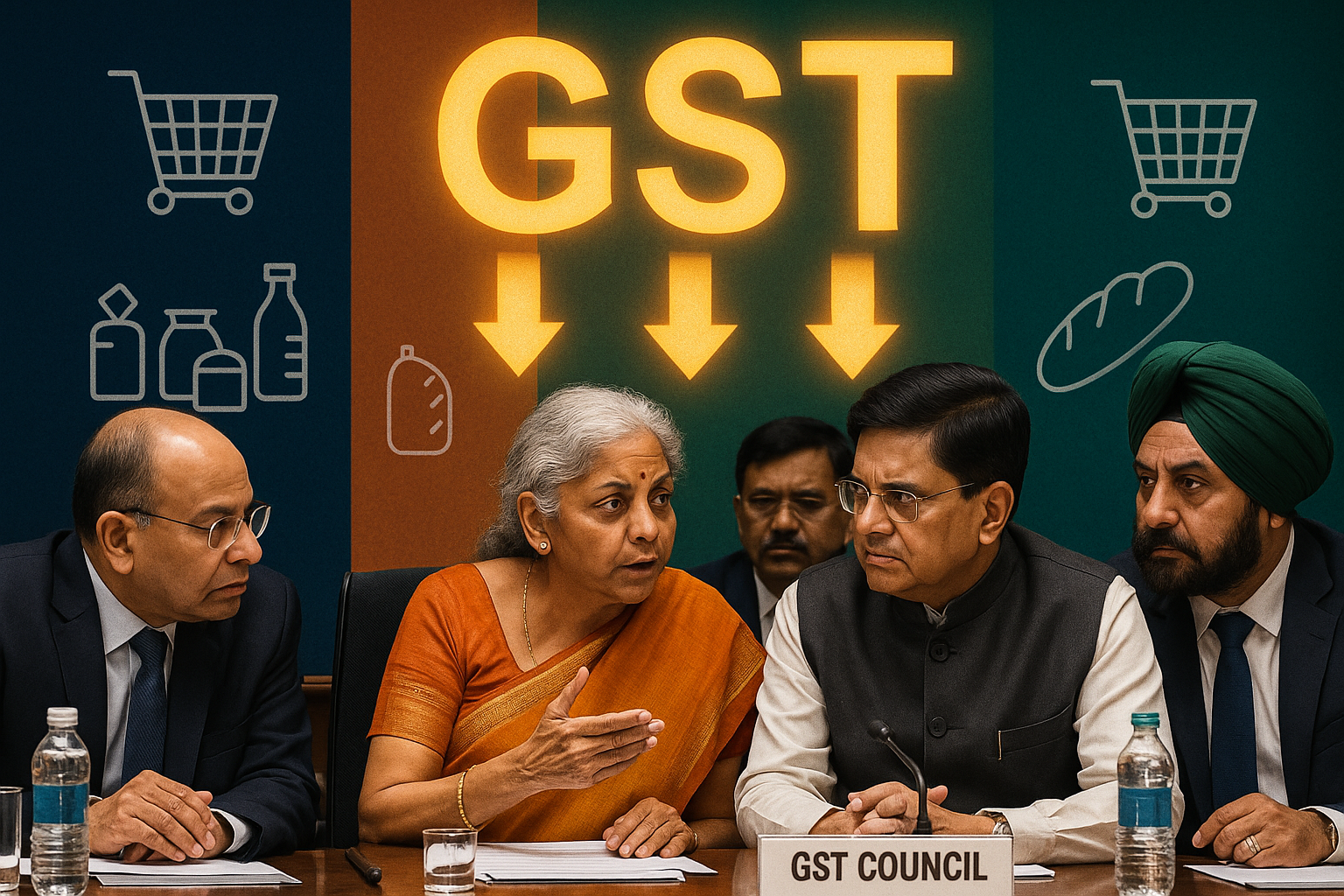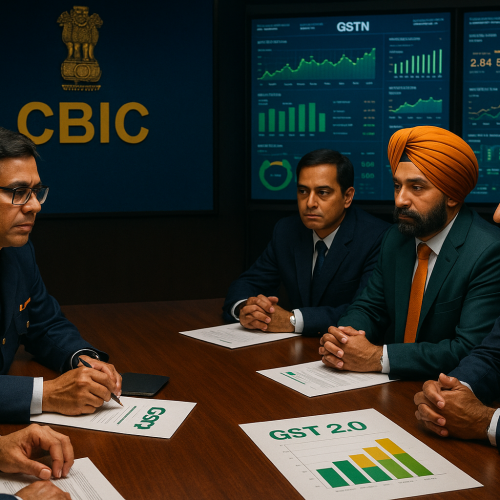The GST Council will convene on Wednesday to deliberate on tax cuts for daily-use consumer items, a move aimed at boosting festive demand and easing household budgets. If approved, the decision could provide immediate relief to consumers while reinforcing the government’s strategy of demand-led growth.
The meeting comes at a time when policymakers are balancing short-term revenue pressures with the long-term benefits of higher consumption and compliance. Analysts see this as a crucial step in making GST more citizen-friendly while keeping states fiscally secure.
Core Development
The agenda for the upcoming GST Council meeting includes proposals to reduce tax rates on essential household goods and mass-consumption items. The reforms are part of a broader “Diwali GST package”, designed to increase affordability and spur festive spending.
Discussions will also cover the revenue implications for states, with assurances from the Centre and leading institutions like SBI that states will remain net gainers under rationalisation. The Council is expected to weigh both fiscal prudence and the political imperative of supporting consumers ahead of the festive season.
Policy and Economic Context
Since its rollout in 2017, GST has faced criticism for complexity and uneven impact across sectors. Rate rationalisation has been a long-standing demand from both industry and citizens. By targeting daily-use items, the government aims to improve consumer sentiment, strengthen compliance, and deliver visible benefits to households.
The Council’s deliberations also coincide with a period of global economic uncertainty and uneven domestic revenue collection. Tax cuts, if implemented, will test the balance between stimulating demand and maintaining fiscal stability.
Key Drivers of Reform
The move is driven by three key considerations. First, festive demand stimulus, with consumer spending traditionally peaking during Diwali. Second, political timing, with reforms aimed at strengthening goodwill among citizens. Third, structural simplification, with fewer and lower tax slabs likely to reduce evasion and compliance costs for businesses.
Stakeholder Impact
For consumers, lower GST rates on daily-use items will directly reduce household expenses, improving purchasing power. For businesses, particularly in retail, FMCG, and e-commerce, the cuts could accelerate sales volumes. For states, the immediate concern is revenue loss, but projections suggest long-term gains through expanded compliance and higher consumption.
Industry and Policy Reactions
Industry bodies have welcomed the prospect of rationalisation, calling it a much-needed boost for consumer sentiment. Policy experts highlight that success will depend on timely execution and monitoring revenue flows. Some states remain cautious, arguing that short-term fiscal pressures could complicate welfare and infrastructure spending.
Challenges and Risks
The main risk lies in balancing short-term revenue sacrifices with long-term growth benefits. If consumption fails to rise as expected, states may face fiscal gaps. Additionally, uneven compliance across regions could dilute the intended revenue offset. External shocks, such as volatile oil prices, may also influence consumption patterns and household budgets.
Strategic Outlook
If approved, the GST rate cuts could mark a significant step in India’s journey toward a simpler and more equitable tax system. By easing the burden on households and stimulating demand, the Council’s decision would support both economic growth and consumer confidence in the months ahead.
Why This Matters
GST rationalisation on daily-use goods is not just a technical reform; it has a direct impact on citizens’ lives. Lower household expenses translate into higher purchasing power, which in turn drives broader economic momentum. For businesses, it means stronger demand. For states and the Centre, it reaffirms the credibility of GST as a reform that balances growth with fiscal responsibility.












